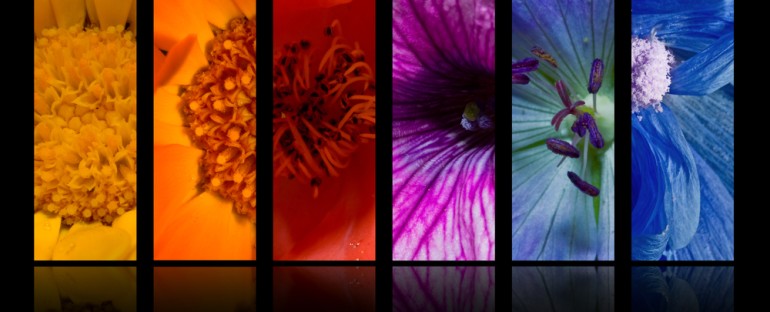Tag Archives: content curation
In kindergarten, I really, really loved Show and Tell. I would dig deep into my toy box, scrounging through every toy and prized possession I owned as I agonized about selecting the absolute coolest one to share with my classmates. Surrounded by my captive audience, all sitting cross legged in a circle as they intently looked up at me, I was excited to just not proudly hold up my cherished possession but to share with them the story behind it. That was, no doubt, my very first experience with curation.
In my high school and college years, I graduated to creating mixed tapes and CDs for friends and loved ones. I spent an inordinate amount of time carefully selecting each song assembling each playlist to match a theme. There was one for post-break ups, dance parties, girl anthems, new romances and favorite classics. I learned to hone my curation skills as I carefully packaged my playlists to fit specific recipients, moods and themes.
These early experiences helped prepare me for the more advanced curation skill sets I would come to depend on in my chosen career as writer, editor and content strategist.
Today, curation has become not just the latest buzzword but important business. It used to be that if you called yourself a curator, you spent your days in the musty back rooms and marble halls of museums. But today, thanks to technology, a variety of creators, content professionals and consumers are laying claim to the title.
What exactly is curation? As defined by Macmillan Dictionary, curation is “the process of analyzing and sorting content and presenting it in a meaningful and organized way around a specific theme.”
Often sold as the answer to information overload, content curation involves the human act of sifting, sorting, arranging and publishing content around a topic into a story narrative that adds value and helps the audience make sense of the big picture. A content curator, akin to the editor’s role, is to add context to the material for the intended audience. It requires a critical hand to thoughtfully sort a few pieces of content from a wide variety of options.
What content curation is NOT, however, is mere aggregation or regurgitation of content, especially that which is volume- or brand-driven. Content curation is really about storytelling through the selection of choices the curator makes.
When distilled to its simplest form, as a content curator, the content I select is that which I’ve seen, read, or heard about that is something I think my audience should also experience. As a result, the job of content curator is highly personal and individualistic. When you decide to include this content and not that, you are making decisions that best serve the story.
However, curators must walk a fine line between making decisions based on their personal choices with those of the broader audience they serve. The truly talented curators actually convince their audience that they are crafting their own choices rather than adopting someone else’s.
As the role of content curator continues to evolve, brands and professionals alike are redefining it. Red Bull now curates events with street artists. Restaurant guide Zagat curates its listings while Etsy, the ecommerce website focused on handmade or vintage items, uses “guest curators.” Actress Blake Lively recently announced she’s launching a lifestyle company that helps people “curate” their lives. In a Business Insider article, Lively explained, “”The main element of it is that it’s about storytelling and it’s about living a very one-of-a-kind, curated life, and how to achieve that.”
From playful Pinterest collages to carefully nurtured iTune playlists to Amazon’s “list” feature, just about everyone is becoming a curator. There’s even a “Curate Meme” Tumblr page which offers up a series of images with curation jokes.
12 Top Content Curation Sites
There are lots of great content curation sites from which to choose. Here are a dozen of my current favorites.
- BuzzfeedFrom “21 Types of People You See at Disneyland” to “19 Ways iOS 7 is Causing the Actual Apocalypse”, this website is a veritable creation and curation machine thanks to a team of editors and curators who constantly feed their audience with interesting factoids.
- CMO.comAlthough still a lightweight in the curation department, this site targeting Chief Marketing Officers does a good job of packaging content around specific themes.
- Fab.comA true success story, FAB is clearly a content company. After a company reset a year or so ago, it now is on track to reach $100M in revenue. With a continuous stream of colorful, engaging images, the site provides continuous content on everything from furniture, art and jewelry to pets, food and fun.
- Google NewsNot surprisingly, this curated platform features aggregated content which is automated. For pure volume alone, you can’t beat this tool from the mega search engine.
- Huffington PostThe folks over at Huffington Post do a great job of curating content using a balance of sources. They create some content, cull great links from around the Web and include some content from its readers.
- InboundIf you’re looking for great content about social media, content marketing and SEO, this should be on your list of go-to sites. A partnership between co-founders of SEOMoz and Hubspot, allows for great community-generated content. It’s also a good example of how social ranking can be effectively used to curate content.
- IntelIntel takes curation a step further with this site that encourages content sourced by its employees via Twitter. Powered by Intel’s proprietary IQ social content curation platform, the website focuses on showcasing the impact of technology on media, life and the planet. It includes three primary categories of content: feature stories created or curated by Intel IQ staff, top trending stories (complete with an IQ score) and tweets using the #IQ hashtag.
- RedditWhile hardly a newcomer, Reddit uses crowdsourcing to provide interesting, and often unheard of, stories and conversations.
- Scoop ItA new curation player on the scene, Scoop.it allows users to curate information about any topic they want, add their perspective and share with their networks.
- Social@CiscoAn early social media adopter, Cisco curates a variety of content from communities, social media channels and blogs.
- Team Titleist Powered by the Telligent platform, this site curates branded content from Titleist blogs, Twitter, Facebook and Instagram accounts. One of its unique features is that it defaults content by what is trending. It’s a one-stop shop for all Titleist content.
- The Monkey Cage
One of the more unique curation sites, The Monkey Cage curates social science research that is publicly available. Content is primarily limited to blog posts by chief blogger and political scientist John Sides but the commentary is well-written and illustrated.
For more content curation examples, download the Content Curation Look Book by Curata.
Do you have any favorite content curation examples? Share them here.
Share This
Recent Blog Posts
- International Women’s Day: Taking action to gain traction
- Be a shoulder and a hand: 10 ways to help women in the workplace show up and shine up
- Unfinished Business: Content Marketing’s Role in Cracking the Glass Ceiling
- Lessons Learned from 84 Lumber’s Super Bowl Fail
- Brands Rise Up to Stand Out in Super Bowl 2017
Categories
Blog Post Tags
My Tweets

About Me
Portfolio Categories
Follow Me
Recent Posts
-
International Women’s Day: Taking action to gain traction
The first time I noticed men and women were treated...
-
Be a shoulder and a hand: 10 ways to help women in the workplace show up and shine up
International Women’s Day is an important day of...
-
Unfinished Business: Content Marketing’s Role in Cracking the Glass Ceiling
When it comes to tackling the gender equality issue...
-
Lessons Learned from 84 Lumber’s Super Bowl Fail
84 Lumber got it wrong on Super Bowl Sunday. In fact,...
















